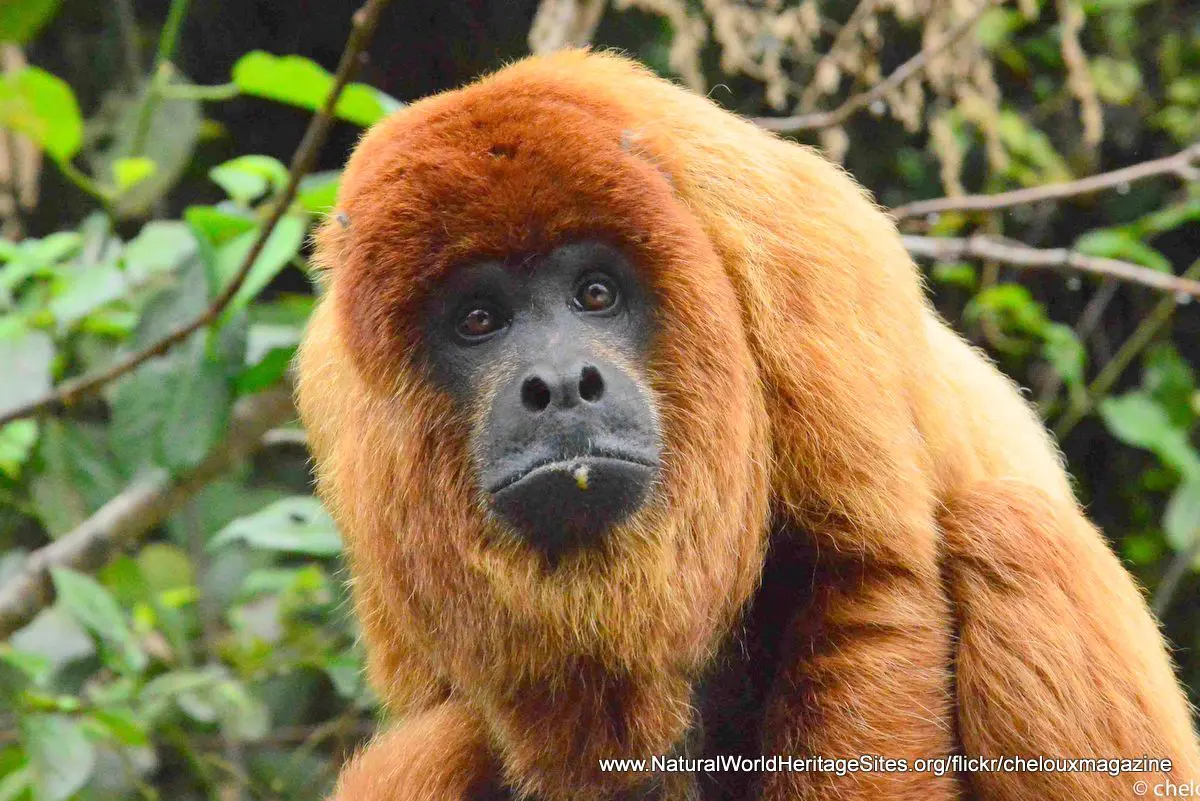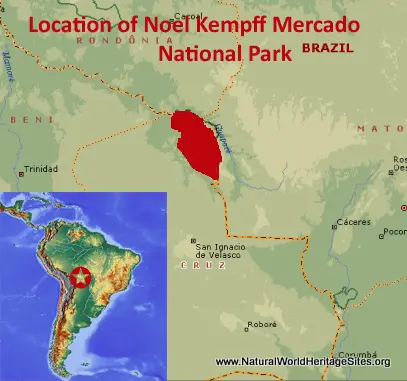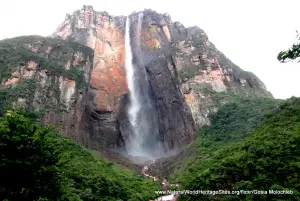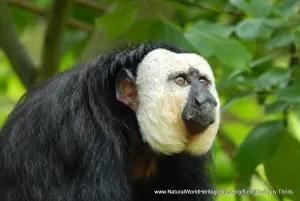EXPLORE Noel Kempff Mercado National Park with this slideshow, check the location map and get all the facts and information below.
For slideshow description see right or scroll down (mobile). Click to view slideshow
Location and Values: Noel Kempff Mercado National Park covers a vast area of pristine wilderness on the southwestern margins of the mighty Amazon Basin. Located in north-eastern Bolivia, along the country’s border with Brazil, the park covers an ancient sandstone mountain range (the Serrania de Huanchaca) together with its surrounding river valleys and plains. It includes a great diversity of habitats from lowland tropical rainforests (at elevations of 200m) to open Cerrado savannas on the well-drained mountain plateau (at around 1,000m). The cerrado habitats of the mountain plateau are effectively ‘islands’ of savanna in a ‘sea’ of forest, isolated from similar habitats across the southern fringes of the Amazon Basin in Brazil (where they have been mostly cleared for agriculture). The mountains and associated cerrado savannas cover about half the area of the park and are bounded by cliffs and steep escarpment slopes with fingers of gallery forest connecting to the lowlands. The park’s boundary is defined by a number of large rivers which eventually flow into the Amazon, and these are punctuated with some spectacular waterfalls, dense rainforests, flooded savannas and lakes. The diversity of habitats supports a corresponding variety of animals and plants, including many rare and threatened species.
Conservation Status and Prospects. According to IUCN’s Conservation Outlook Assessment (2020) the conservation status of Noel Kempff Mercado National Park is ‘good, with some concerns’. The IUCN report notes that the site enjoys a high degree of natural protection due to its large size and isolation from areas of human settlement. The main concern is the incidence of wild fires which cannot be effectively managed. The management agency is short-staffed and under-funded, so threats to the site cannot be adequately addressed. In addition to the threat of wild fires, the park is subject to incursions by illegal settlers, and illegal grazing of domestic livestock (which can lead to the transmission of disease from domestic livestock to wildlife). Other threats to the park’s values include hunting, commercial fishing and illegal logging, particularly along the international border with Brazil. The effects of climate change are poorly understood, but may become pervasive in the years to come.
Links:
Google Earth
Official UNESCO Site Details
IUCN Conservation Outlook
UNEP-WCMC Site Description
Birdlife IBA
Slideshow description
The slideshow ‘tells the story’ of Noel Kempff Mercado National Park with a portfolio of photos that illustrate the landscape features of this vast wilderness, together with some of the characteristic animals. Access to this remote park may involve a pontoon river crossing, where clouds of butterflies are disturbed from their massed gatherings on the river sandbanks. The first part of the slideshow illustrates some of the main features of the lowland parts of park, where a wealth of colourful birds can be seen, including species such as hyacinth macaw, Gould’s toucanet and red-throated piping guan. The Itenez River supports a good population of Amazon River Dolphins, and in the forests along its banks there are lowland tapir, Columbian red howler monkey, white-bellied spider monkey, Geoffroy’s monk saki, and other primates. Large areas of the lowlands are subject to seasonal flooding, including much of the rainforest, and the forests are punctuated with some spectacular waterfalls, including the Arco Iris and Federico Ahlfeld waterfalls (which are illustrated).
The second part of the slideshow illustrates the cerrado habitat that characterizes the mountain summits. Here the well-drained, nutrient-poor soils support savanna grassland communities with a relatively rich flora, but fewer large mammals. Among the more prominent mammals in this part of the park are giant anteaters and giant armadillos.
The following Flickr photographers and other sources are acknowledged with thanks for their contributions to this slideshow: Dr, Milton, estherjulier, Carlos Caminando, Gregor Samsa, koeberle_Martin, teito_123, Chen-G., Georg Sander, Bernard Dupont, chelouxmagazine, Dallas Krentzel, Dave Curtis, Gregory ‘slobirdr’ Smith, Phil Whitehouse, Sucram Yef, Tambako the jaguar, Allan Hopkins, Juan Camilo Rios Orjuela, Smithsonian Institution and _paVan_.
Factfile
Website Categories:
Tropical & Sub-tropical Forests;
Tropical & Sub-tropical Savannas
Area: 15,234 km2
Inscribed: 2000
UNESCO Criteria:
- Ecological processes (ix);
- Natural habitat for biodiversity (x);
- Significant number of rare, endemic and/or endangered species (x)





